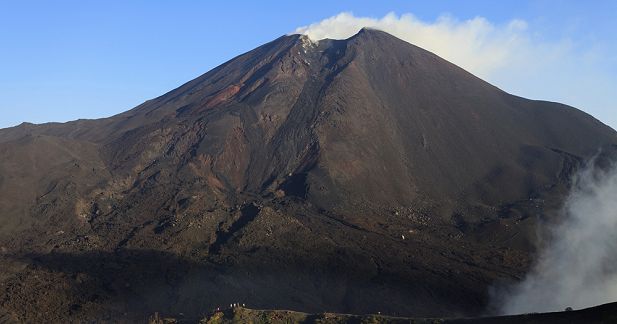
The Surprising Link Between Chocolate and Lava
February 13, 2019
From guest author and volcanologist Arianna Soldati...
I have wanted to be a volcanologist for as long as I can remember, taken with the idea of travelling the world sampling hot, fluid lava from active volcanoes and running high-temperature experiments in a fancy laboratory. But before I could do that, I had to start by studying Geology: things like mapping rock outcrops and identifying minerals. A class on chocolate making was definitely not part of the standard curriculum, but maybe it should have been.
A few months ago, a colleague of mine announced that she would transition from academia to industry – chocolate industry. I was perplexed but intrigued. Lava and chocolate don´t appear to have a lot in common, aside from the fact that most volcanologists like both. So how could her – our – skills and expertise translate to chocolate making?
Volcanologists like myself spend a lot of time thinking about viscosity. 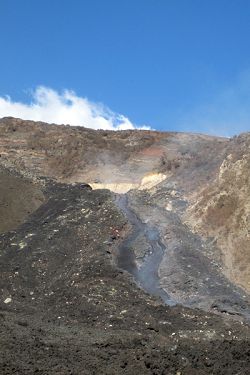 Viscosity (thickness, stickiness) is a fun and familiar material property. It is what allows the oil in your car engine to flow but prevents the paint on your wall from dripping. To us, viscosity is one of the key properties that determine how far lava will flow and how fast it will get there. Understanding what controls it, and how it changes, is vital to protect the five hundred million people living near an active volcano worldwide.
Viscosity (thickness, stickiness) is a fun and familiar material property. It is what allows the oil in your car engine to flow but prevents the paint on your wall from dripping. To us, viscosity is one of the key properties that determine how far lava will flow and how fast it will get there. Understanding what controls it, and how it changes, is vital to protect the five hundred million people living near an active volcano worldwide.
But viscosity is also what controls the texture of foods like yogurt, ice cream, and of course chocolate. Engineering the viscosity of chocolate is key to the success of many products. For a chocolate fountain, it should be low enough to easily flow and drip, whereas for a praline it should be high enough to retain its shape while in the box, yet easily melt in your mouth – there is nothing quite like that feeling.
Both molten chocolate and lava are complex mixtures. There is a liquid part: the fat (cocoa butter) in chocolate, and a pure silicate melt in lava. These liquids then contain different crystals: cocoa, sugar, and powder milk in chocolate, and various minerals (e.g. olivine and plagioclase) in lava.
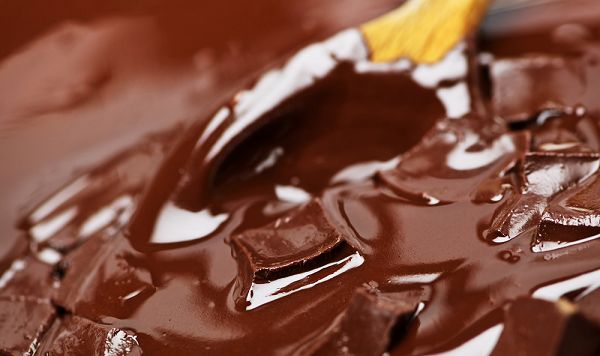
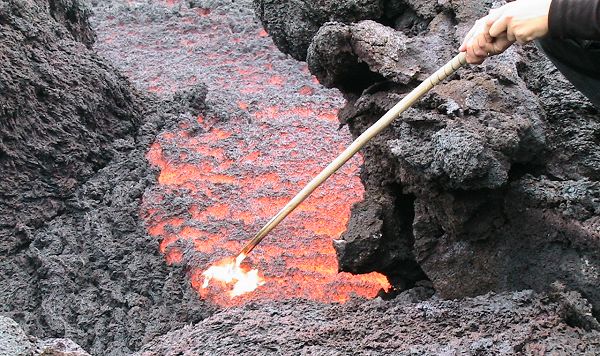
The size of the crystals is key. Those in chocolate are of the order of 25 microns: any smaller and the chocolate will not melt smoothly in your mouth, any bigger and it will be gritty, as our tongue detects particles bigger than 30 microns.
Chocolate of Modica uses an ancient and original recipe with manual grinding. This gives the chocolate a peculiarly grainy texture. Compare the look of this chocolate bar with the close-up of a piece of lava (from Piton de La Fournaise, La Réunion) where you can see the (olivine) crystals.
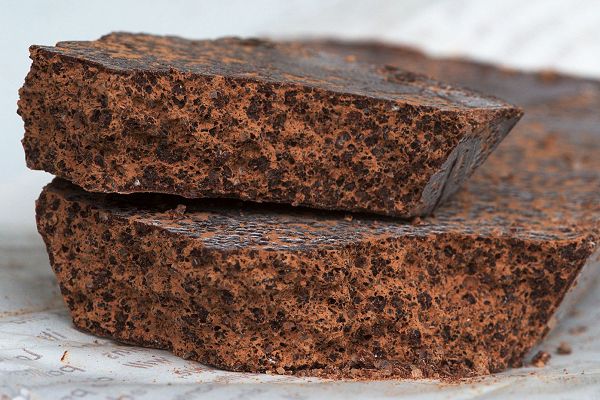
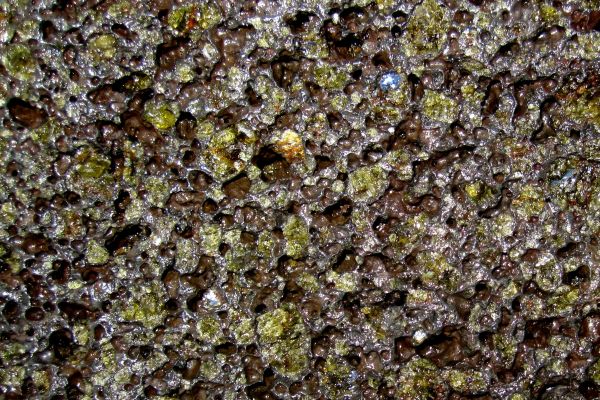
Crystals in lava span a wider size range (up to a millimeter or two), and their size-dependent effect on viscosity is exactly what my research currently focuses on. We know from experiments on other materials – including chocolate! – that at any given crystal content (say 10% of sugar), the viscosity of the mixture (chocolate) will be higher if the crystals are smaller.
The same is likely true for lava as well. I am attempting to demonstrate and quantify this effect. If we can use crystal size to understand the viscosity of lava, we will better be able to predict the distance and speed at which lava will flow.
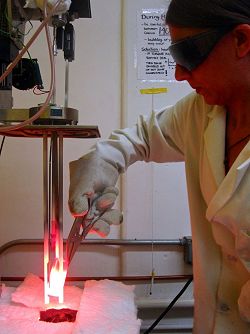 In order to do that, I run high-temperature laboratory experiments in a concentric cylinder viscometer – the same apparatus you will find in any Research & Development division of a company in the chocolate industry. I do have to crank up my furnace quite a bit higher though: I heat up my lava samples all the way to 1800° F, whereas for chocolate 100° F will suffice. Aside from this, the protocol is almost the same.
In order to do that, I run high-temperature laboratory experiments in a concentric cylinder viscometer – the same apparatus you will find in any Research & Development division of a company in the chocolate industry. I do have to crank up my furnace quite a bit higher though: I heat up my lava samples all the way to 1800° F, whereas for chocolate 100° F will suffice. Aside from this, the protocol is almost the same.
Sure, volcanologists and maîtres chocolatiers have different research objects and objectives – but ultimately, we both investigate and try to control viscosity – doing so in much the same way – whether in University laboratories or chocolate industry R&D departments.
"Chocolate of Modica" photo: by Mussklprozz (cropped). CC BY-SA 3.0, via Wikimedia Commons.
 Got a Chocolate Business?
Got a Chocolate Business?
Here's the easiest way to get an unfair advantage in your business whether you are just thinking about getting started, or your business is new, or you have been around a while...
- The Surprising Link Between Chocolate and Lava - February 13, 2019

